
Grand Staircase-Escalante National Monument
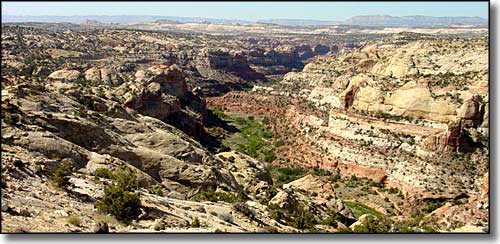
Escalante Canyons
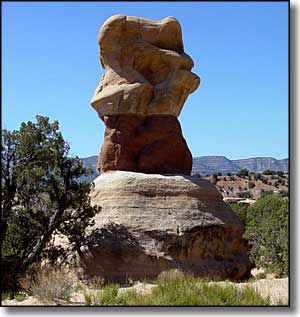
Grand Staircase-Escalante National Monument spans almost 1.9 million acres of south-central Utah, a region that was the last place in the continental US to be mapped. This is an area of high plateaus, deep canyons and multi-hued rock formations and cliffs that can extend for up to 100 miles. This is a world-class geologic sampler displaying 200 million years of Earth changes in a very large remote area filled with very difficult terrain. This land is as pristine as it is primarily because of its innate ability to frustrate human settlement. On the other hand, if you're looking for adventure or solitude or a place to explore eons of geologic time, this is the place to go.
The Grand Staircase is the name given to a series of spectacular cliffs rising step-by-step northward from the Grand Canyon area. Each line of cliffs, from the Vermillion Cliffs to the White Cliffs to the Gray Cliffs to the Pink Cliffs, is composed of different layers of depositions made over the last 200 years. The Vermillion Cliffs are deep red Moenkopi sandstone on top of Chinle badlands, and the formations contain fossils of fish and small dinosaurs from the late Triassic Period. The White Cliffs are Navajo sandstone (solidified Jurassic sand dunes). The Gray Cliffs are ocean-bottom shale filled with the fossilized remains of marine life and beds of marsh and swamp plants compressed into coal. The Pink Cliffs at the top of the Staircase are composed of limey sandstone deposited in the bottom of an ancient large freshwater lake.
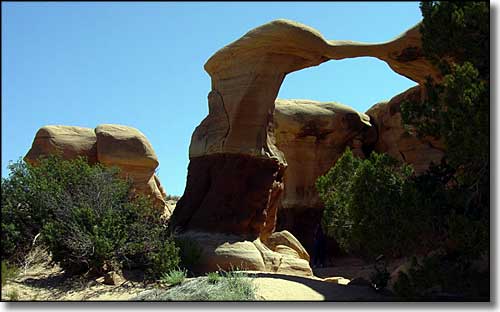
Hoodoos in the Devil's Garden
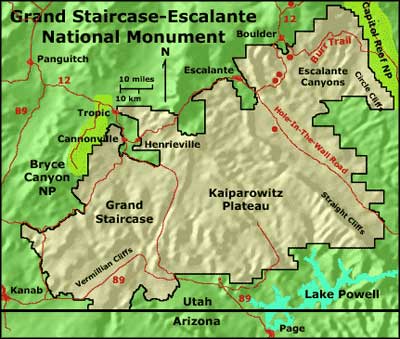
The Kaiparowits Plateau is an 800,000-acre-plus area of incredibly rich fossil deposits from the late Cretaceous Period. This is a very dry and highly eroded area of sheer cliffs, wide canyons and poisonous soils. Many of the red hills of oxidized rock that you'll find here were created in the aftermath of huge underground coal fires. The eastern edge of the Kaiparowits Plateau is marked by the Straight Cliffs of Fifty-Mile Mountain that drop to the Fifty-Mile Bench via a sheer, 2,200' escarpment. The Kaiparowits Plateau itself is a highly eroded but shallow slope dropping slowly to the south and west. The Hole-in-the-Rock Road, important in the lives of early Mormon settlers in the area, runs southeasterly from the town of Escalante along the base of Fifty-Mile Mountain.
On the eastern side of the Fifty-Mile Bench lies the highly eroded Navajo sandstone of the Escalante Canyons region. This extremely dry countryside has been eroded into a maze of canyons and cliffs by the action of flowing water over the millenia. East of Escalante Canyons is Capitol Reef National Park and south and east is Glen Canyon National Recreation Area. Off the southern edge of the National Monument and straddling the Arizona-Utah border is the Vermillion Cliffs National Monument and Paria Canyon-Vermilion Cliffs Wilderness. To the west is Coral Pink Sand Dunes State Park. South of Cannonville on the northwest side of Grand Staircase-Escalante is Kodachrome Basin State Park. Further to the northeast is the Escalante Petrified Forest State Park and the Anasazi State Park Museum northeast beyond that.
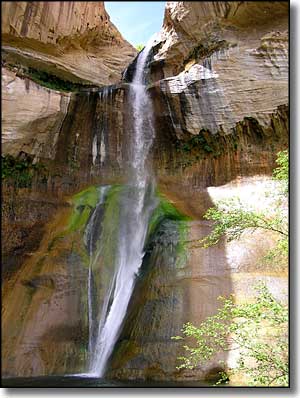
In 2002, a volunteer at Grand Staircase-Escalante National Monument was hiking near the Arizona border and discovered a fossil about 75 million years old. This was the first discovery of the ancient species now called Gryposaurus monumentensis (hook-beaked lizard from the monument). Monumentensis was at least 10 feet tall and 30 feet long. His jaw was extremely strong and held about 800 teeth. The skulls of 2 other dinosaurs were discovered just below the Kaiparowits formation in the Wahweap formation in 2001 and 2002. These horned dinosaurs are estimated to have lived 80 to 81 million years ago.
More recently, the Ancestral Puebloan and Fremont peoples lived here from about 500 CE to maybe 1260 CE. They grew squash, beans and corn in the canyons and lived in pit houses and natural rock shelters. They left rock art and the ruins of many of their structures behind throughout the Monument.
In 1879, headed for their proposed colony in southeastern Utah, the San Juan Expedition crossed through Grand Staircase-Escalante until they reached the 1,200' sheer sandstone cliffs surrounding Glen Canyon. They located a steep, narrow, rocky crevice (Hole-in-the-Rock) in the cliff that dropped to a sandy slope that then led to the river. The Expedition spent six weeks building a rope-and-pulley system to lower their animals and wagons down the cliff. From there they crossed the Colorado River and continued southeast via Cottonwood Canyon until they reached the site of present-day Bluff.
Grand Staircase-Escalante National Monument is accessed from the south via Highway 89 and from the north via Highway 24, but all the roads in between are gravel, rugged and can easily degenerate into the horribly primitive, quickly, when inclement weather sets in.

In the Chinle Badlands area
To return, use the Back button of your browser.
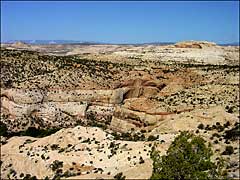 Calf Creek Canyon |
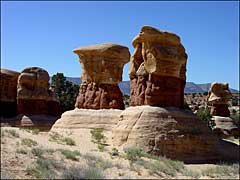 Hoodoos in Devil's Garden |
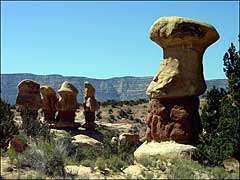 More hoodoos in Devil's Garden |
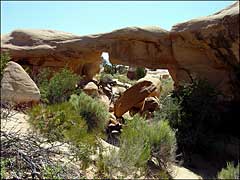 A sandstone arch |
 ...and more hoodoos |
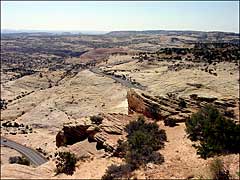 Escalante Overlook |
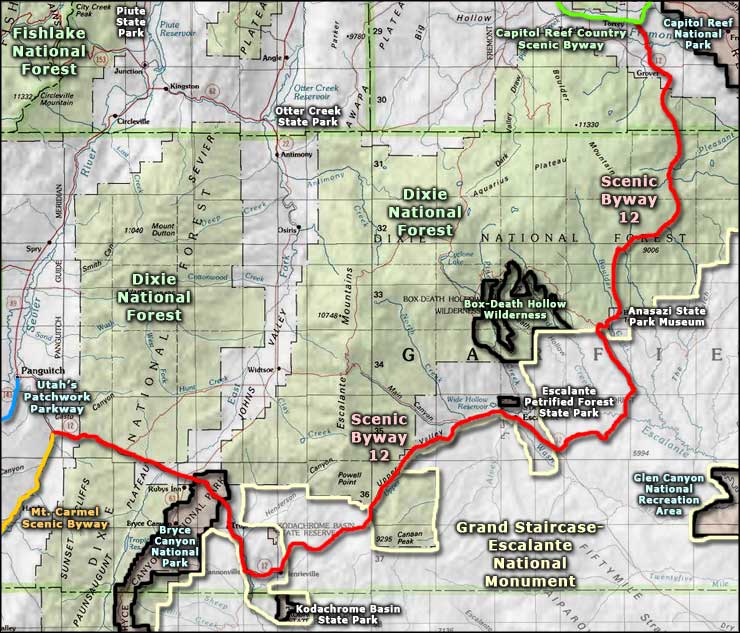
Grand Staircase-Escalante National Monument area map
